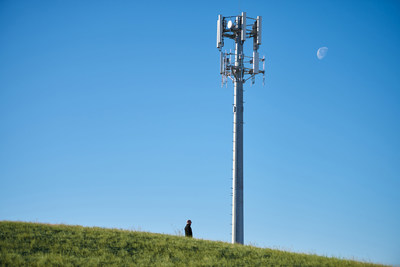5g cell towers are a modern type of antenna being used by wireless firms to offer internet-based services. They are more powerful than 4g towers and can be bigger and stronger.
Many cities are becoming concerned that these towers may harm their residents. This includes aesthetic, privacy, and health issues.
They're Bigger
In 5G, the frequency of radio signals is greater than 4G. This means it needs more towers to transmit data. This can increase the amount of radiation that can be released into the environment.

This is a big concern for HOA communities and real estate investors, as well as those concerned about adverse health effects. They worry that adding more 5G towers will lower property values and negatively impact public health.
The only solution to this is to change how we communicate - by using WiFi instead of traditional cell networks. That's not going to occur overnight however it will happen eventually.
How will this be achieved? How can we make it safer? The answer is in the technology of a cell tower called small cells.

They're More Expensive
If you live in a city, you've probably noticed large towers of cellular equipment that are atop masts and other structures. These are towers that are 4G and they're used to supply wireless internet service to nearby regions.
They're typically 50-200 feet tall, and they're designed to blend in with the surroundings to minimize their visual impact. As opposed to 4G, 5G technology requires more dense tower coverage to offer wide-area coverage.
These cell towers can be difficult to maintain because they must be continuously in operation and delivering high speeds. As a result, they're more costly than other types of towers.
However, if you're a tower owner or an operator for mobile networks, it makes sense to upgrade your existing towers to 5G, in anticipation of the new technologies that are coming to market. Incorporating these latest technologies into existing sites can help enhance the capabilities of your site, which will ultimately lead to more income for you.
They're even more deadly
5g Towers: What's the Problem?
One of the most significant issues with 5g towers is that these emit more radiofrequency radiation than other kinds of towers. This is because they need to be placed in a more dense manner over an area in order to guarantee coverage.
The RF waves given off from cell phone towers don't possess enough power to cause damage to DNA directly or to heat body tissues, but they do degrade chemical bonds in DNA, which could damage cells and cause cancer.
It is a reason to be concerned that living near a 5g tower could have negative health consequences.
The reason is that the 5g towers tend to be situated near to schools and homes, where they can transmit rf waves continuously. This means they'll be closer to you than ever before and there is a greater chance that radiation from them is absorbed by your body.
They're Not Required
5G networks use a new part of the radio spectrum that can transmit data. They are known as millimeter wave. They're much shorter than traditional radio waves at less than 1 to 10 millimeters in length. Therefore, they have a higher frequency and can carry more energy.
In 5g radiation to provide the super-fast speeds and low latency 5G promises, you need to establish a vast array of mobile towers. This will require a large number of masts that be able to cover roads, cities, business districts, colleges and even farms.
There are alternative options for delivering high-speed internet in densely populated regions. One option is to build tiny cell sites that are densely spread to fill in gaps in coverage.
But a major concern is where these cells will go and how they'll impact residents. Local authorities and residents are trying to figure out ways to stop these installations or prevent them from happening in their communities.
